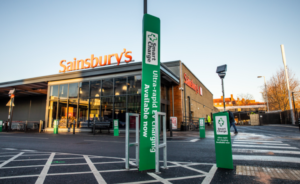UK’s first hybrid train is now operational
Chiltern Railways has refitted a 20-year-old diesel train with a battery that enables it to use 25% less fuel and significantly reduces air pollution.
Chiltern railways, Porterbrook, and Rolls-Royce have worked together to convert the diesel train into one that now runs on both diesel and battery power.
This is the first 100mph capable hybrid train to operate on the UK’s national rail network.
The train has a 25% reduction in CO2 emissions on every journey.
The HybridFlex train substantially cuts fuel usage and reduces noise by up to 75% in and around stations and urban areas. It also presents the opportunity for quicker customer journeys in the future.

‘Chiltern Railways is determined to operate a railway that is as sustainable and environmentally friendly as possible,’ said Richard Allan, Managing Director for Chiltern Railway.
‘We have worked hard with our partners to fit a powerful battery power pack underneath a 20-year-old diesel train to make the train cleaner, quieter and quicker. We are really proud that this concept train is now carrying customers and look forward to assessing its performance in daily service.’
The HybridFlex train will initially operate between Aylesbury and London Marylebone with plans to bring the new type of train to the London to Oxford via Bicester Village route in the coming months.
‘Rail is getting even greener and Chiltern Railways’ launch of this cutting-edge hybrid train is another major leap forward,’ Wendy Morton, Government Rail Minister, said. ‘We are working across transport to hit net zero by 2050, and it is brilliant to see our railways rising to the challenge.’

















The efforts of Chiltern railways, Porterbrook and Rolls-Royce have certainly paid off: equipping a 20-year-old diesel train with an electric battery has resulted in an efficient hybrid train, producing 25% less polluting gases. On top of that, it is much quieter than traditional trains and promises faster journeys for passengers in the future.
Let’s hope that the same technology can be applied to as many trains as possible, thus encouraging a move towards greener railway stations.